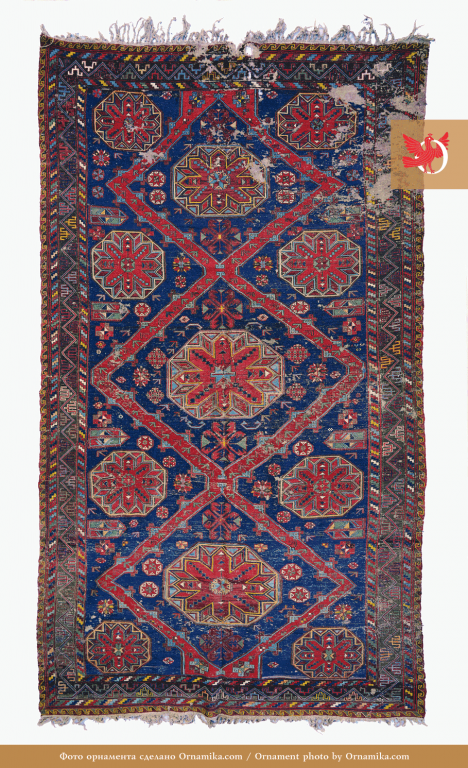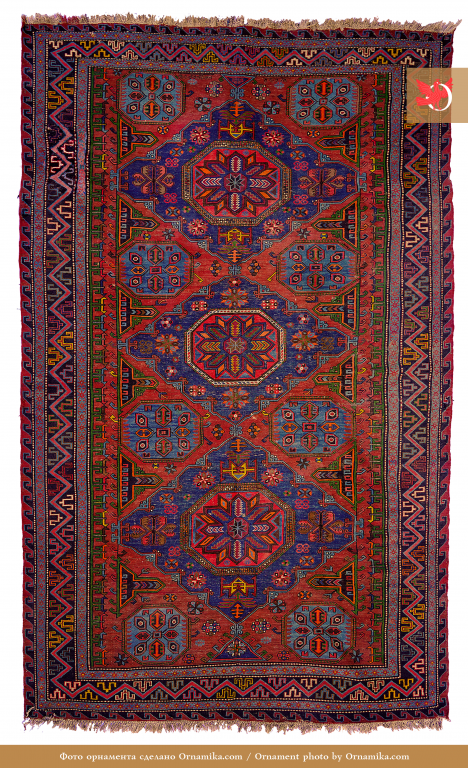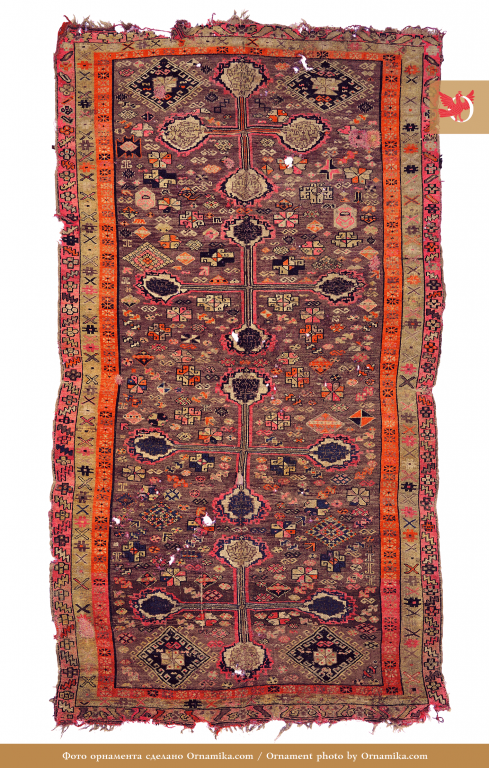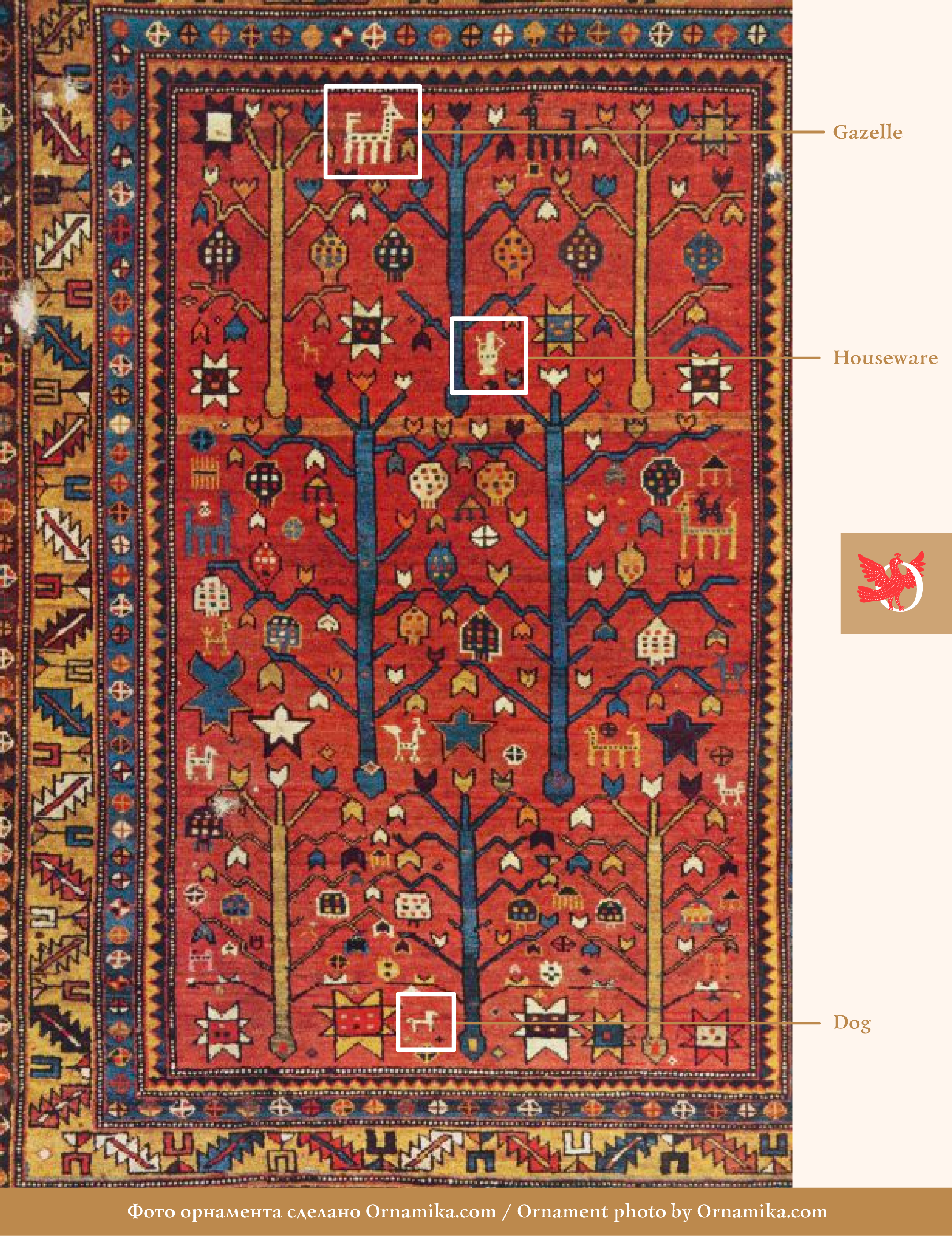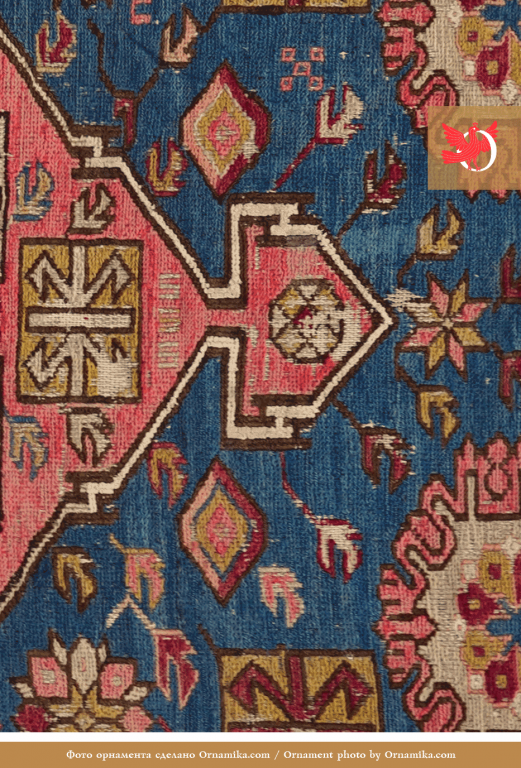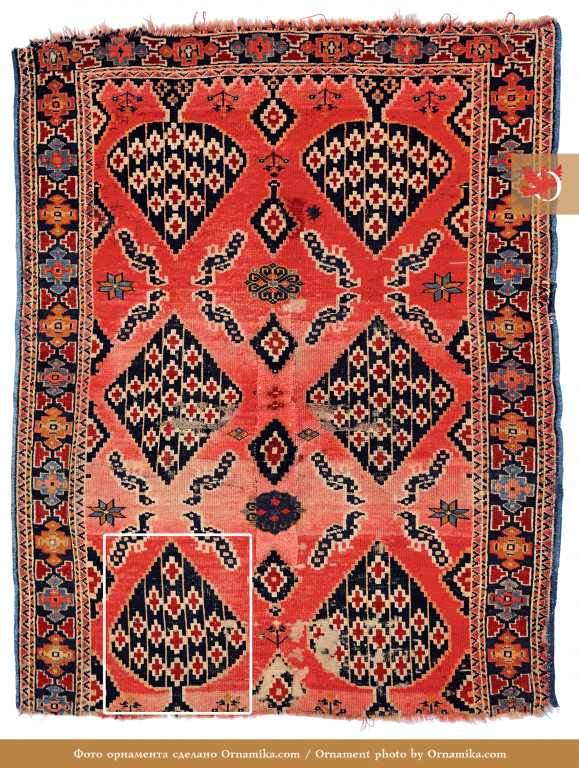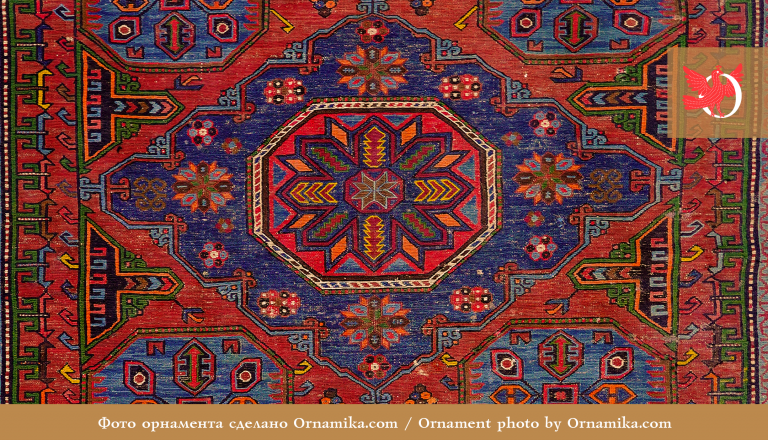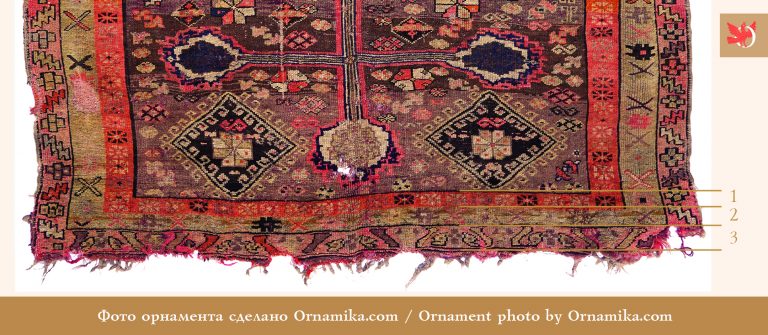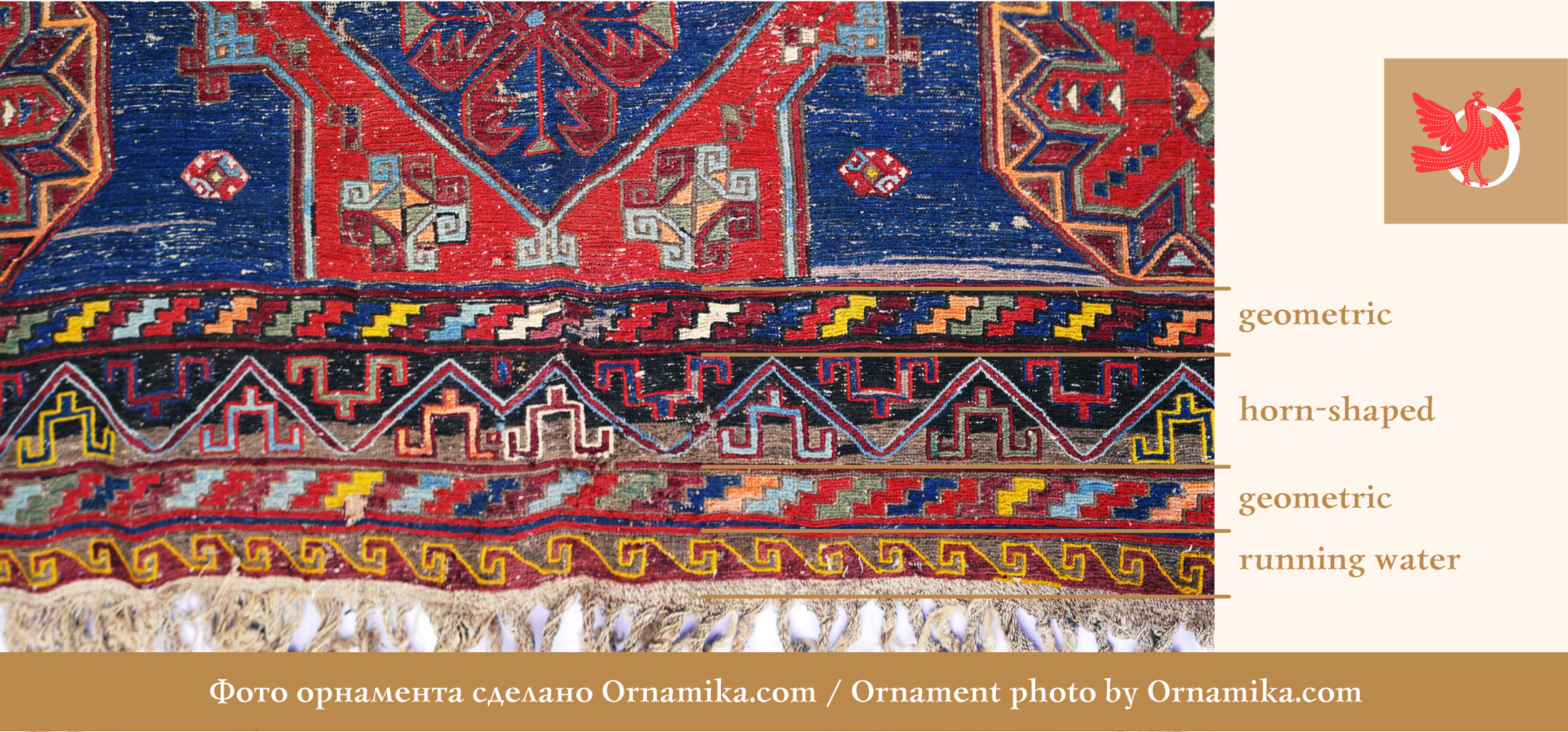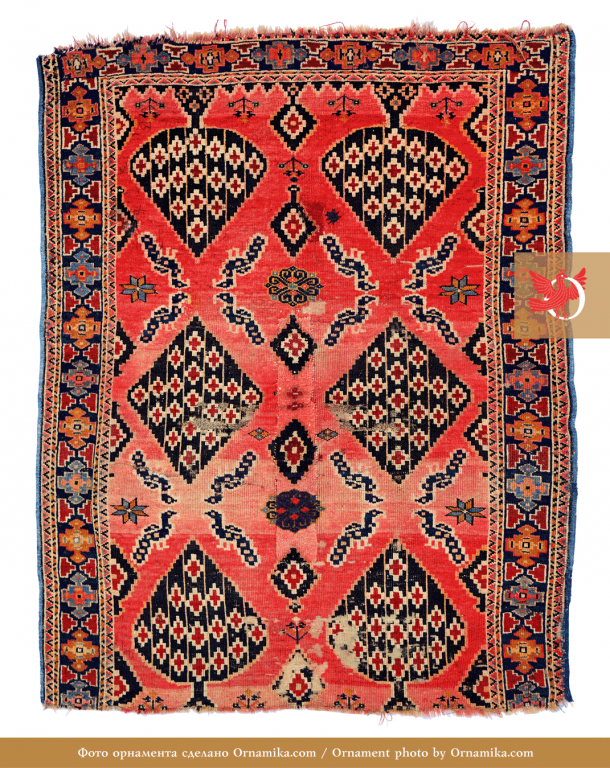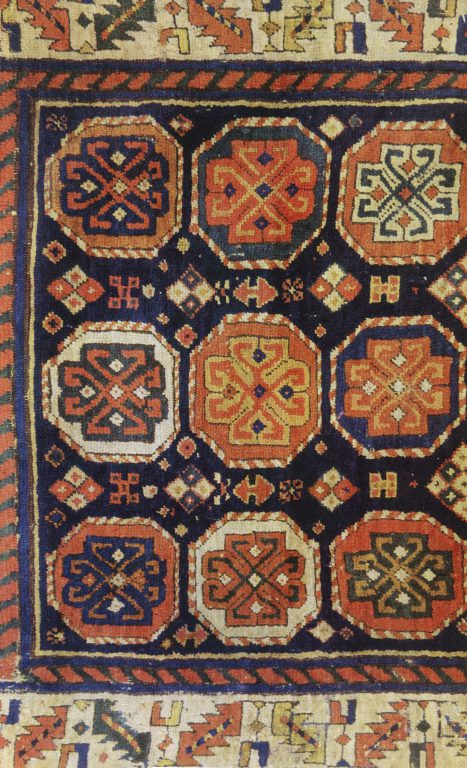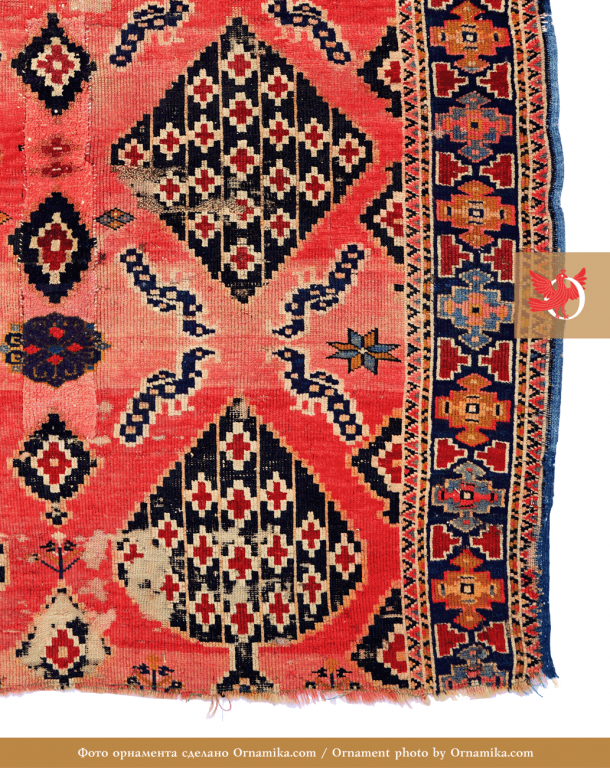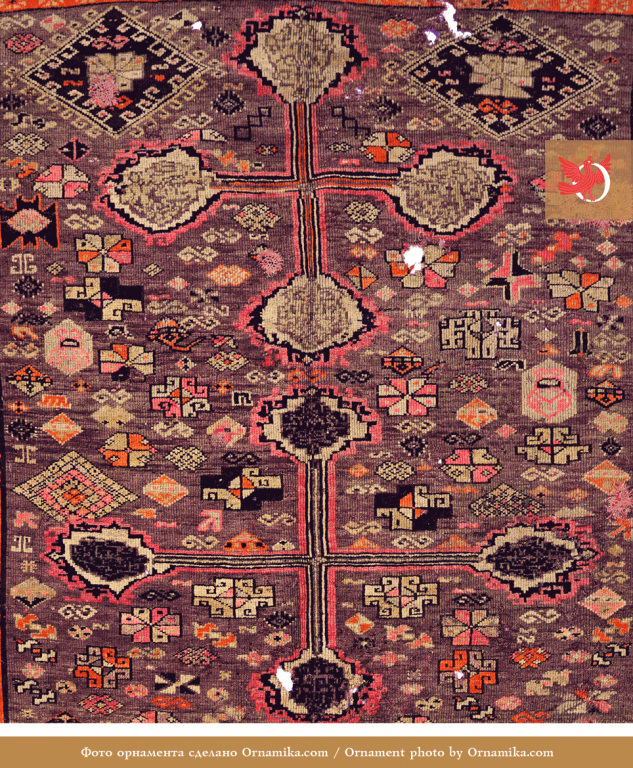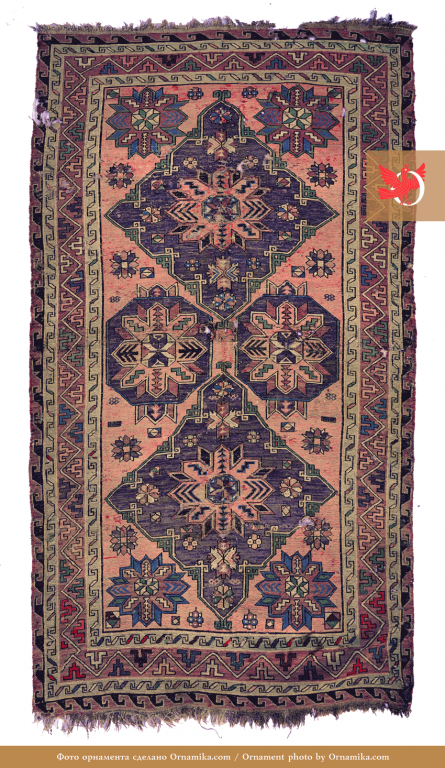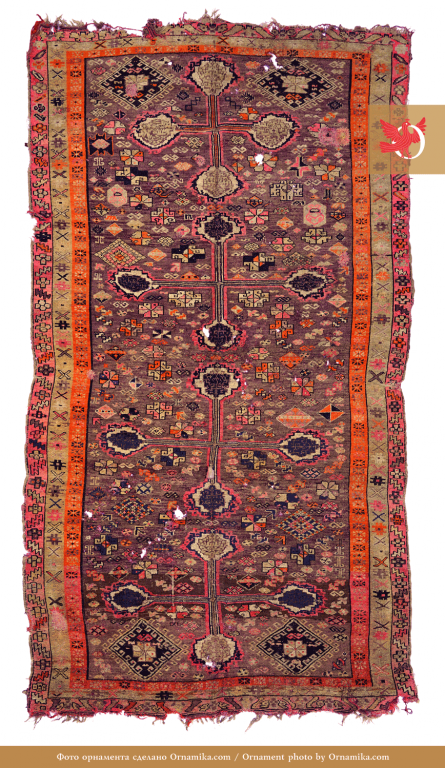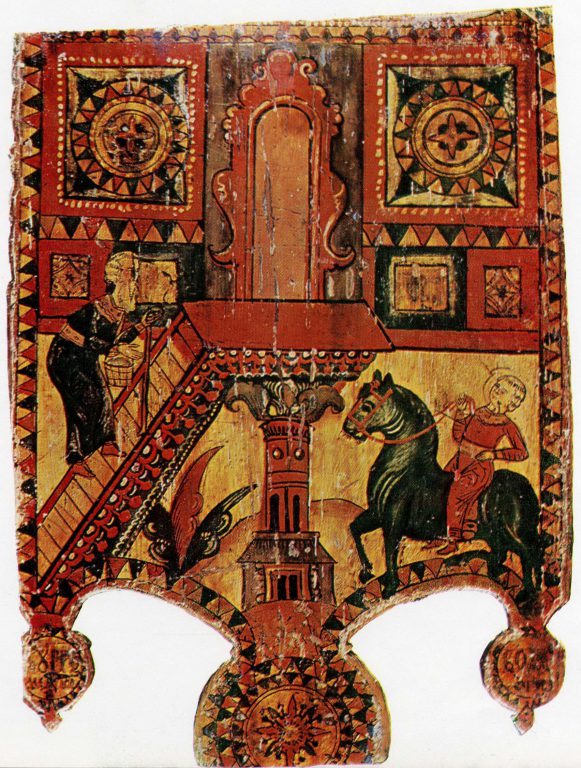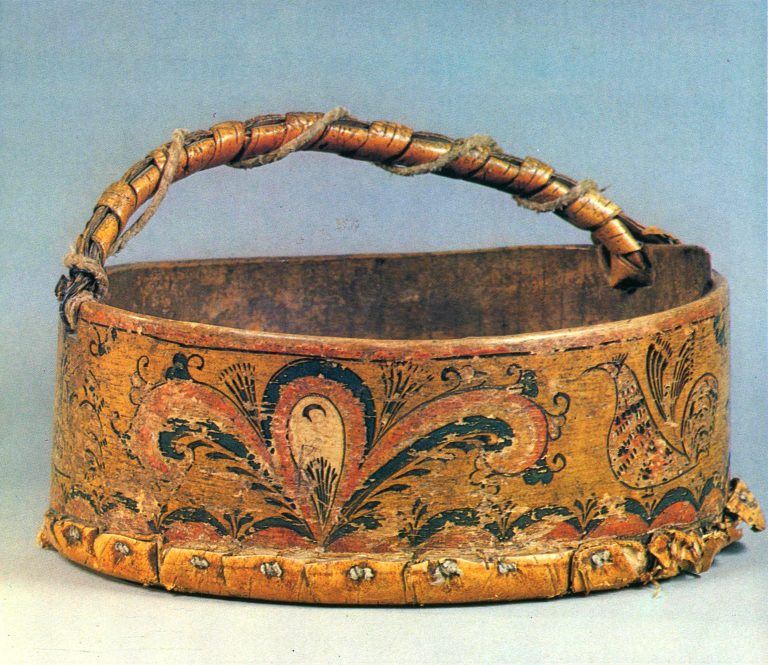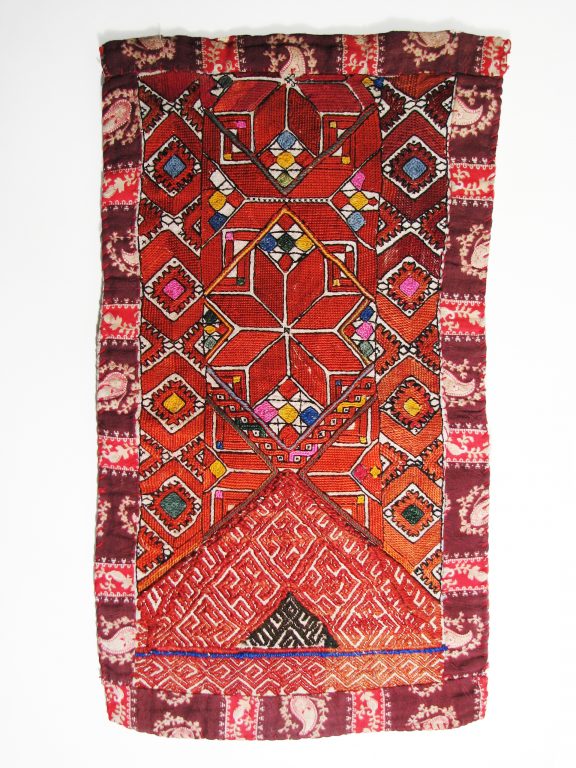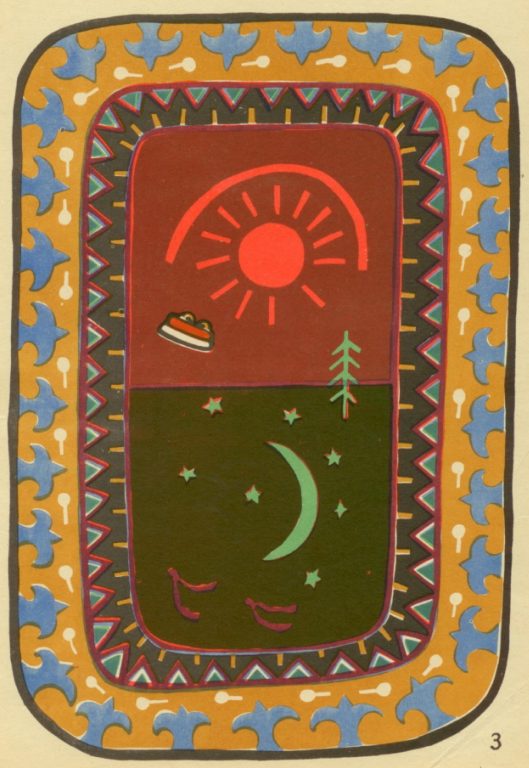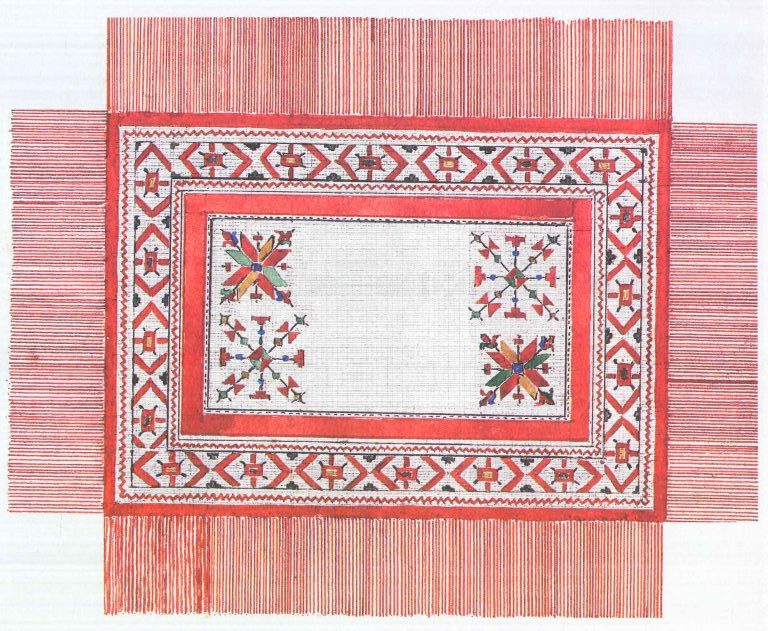The Diversity of Cultures, The Colourfulness of Rugs
Dzhedzhim, kilim, sumakh, chibta, burtina, kijiz, arbabash, tsaha… These mysterious words refer to different types of Dagestani carpets. The “tongue of rugs” can be regarded as one more language of Dagestan (and there are more than 50 languages spoken in this multinational republic). The ornamentation of ancient carpets, just like natural tongues, can tell a lot about everyday life, traditions, and a worldview of peoples of the Caucasus.

Photos retrieved from: Lake Kezenoyam – Wikipedia.org; Aeolian city – az-dag.ru; Sulak canyon – etokavkaz.ru; nature of Tabasaransky district – uspeach.com
In this article, we will look into the ornamentation of carpets from Southern Dagestan. For this purpose, we will observe rugs of the late 19th – early 20th centuries from the collection of the Derbent Museum and Nature Reserve and selected objects from the book “The Decorative Arts of Dagestan” written by D. A. Chirkov.
7 Facts about Dagestani Rug Making
1. Almost every household produced their own carpets – they were needed to cover stone walls and earthen floors and to keep dwellings warm in a mountain climate.
2. Women could devote from eight to ten months per year to rug making – time when they were free from agricultural work. They made area rugs, wall carpets, saddlebags, belts to carry jugs, and many other things.
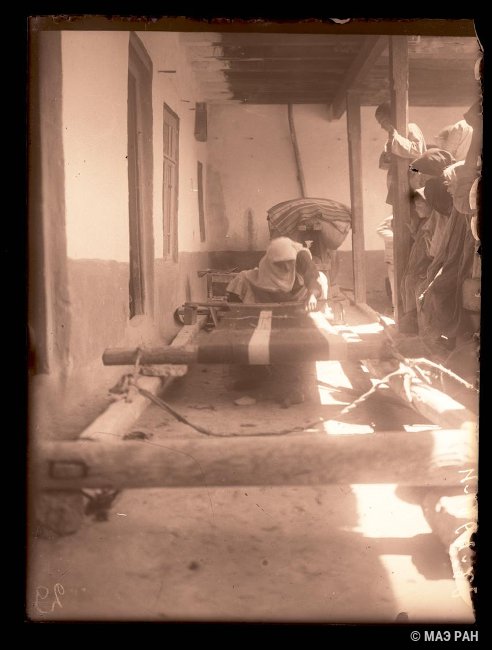
Photo retrieved from the collection of the Peter the Great Museum of Anthropology and Ethnography (the Kunstkamera) of the Russian Academy of Sciences.
3. Dies for woollen rugs were made of herbs, tree bark, shrubs’ fruits, and insects. Onion husks, saffron, celandines, lily-of-the-valley, figs, and nettles were also widely used. Another popular ingredient was the rose madder that allowed obtaining different shades of red – from bright pink to dark raspberry.
4. Due to this variety of natural dies, the colours of Dagestani carpets are very rich and diverse – from 7 to 24 shades were used to create a pattern. This can be clearly seen in lint-free sumakh rugs from Southern Dagestan: their colour schemes consist of blue, blue-grey, white, brownish-red, golden ochre, orange, and red tones.
5. Basing on the technique of making, Dagestani carpets could be classified in four groups: lint-free, tufted, felt, and combined rugs.
6. Even an ancient ethnographic map of Dagestan that dates back to 1886 resembles a colourful carpet: different colours designate areas of inhabitancy of the Lezgins, the Avars, the Dargin, the Kumyks, the Tabasarans, the Laks, and other peoples. Every nation has its own typical ornaments and techniques of rug making.
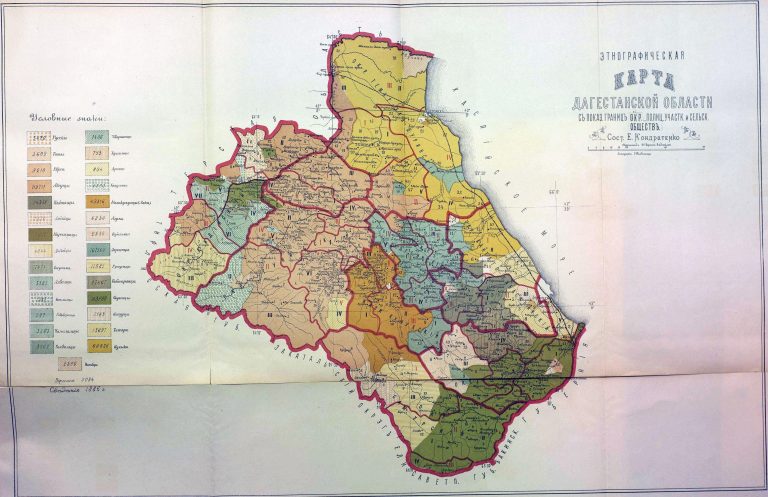
7. Trading with the East and Central Asia, as well as the active cultural exchange between different regions of the Caucasus influenced the ornamental “tongue” of Dagestani rugs.
The Ornamental Motifs of Carpets from Southern Dagestan
Local ornaments are characterised by simple forms and minimally elaborated details. However, the motifs expressed are quite complex and may have symbolical meaning.
The motifs are classified in 4 main groups: there are geometric, floral, zoomorphic, and anthropomorphic ones.
- Geometric ornaments are archaic and the most solid ones. They consist of different patterns that are comprised of dots, straight and zigzag lines, polygons, stars, crosses, spirals, and meanders. Rug makers (females) combined several types of these elements, thereby creating the great variety of compositions and making complex ornamentation.
Regular and x-shaped crosses or lines spreading from a centre of a compositional element are cosmogonic ornaments – these are schematized images of the Sun and starts.
Old-timers of Dagestan say that various symbols, such as spirals and labyrinths, were believed to have magical properties and were used to save a dwelling from evil spirits. A triangle-shaped pattern was used as a talisman which purpose was to protect its owner since their birth and until old age. A hook-like sign that resembled a reversed letter “S” symbolised prosperity, wealth, and opulence.
- Floral ornaments were inspired by the beauty and richness of the local nature. Common patterns include trees, branches, petals, and flower bouquets. When rug makers worked on this kind of ornamentation, they followed the real examples, depicting what they saw in real life.
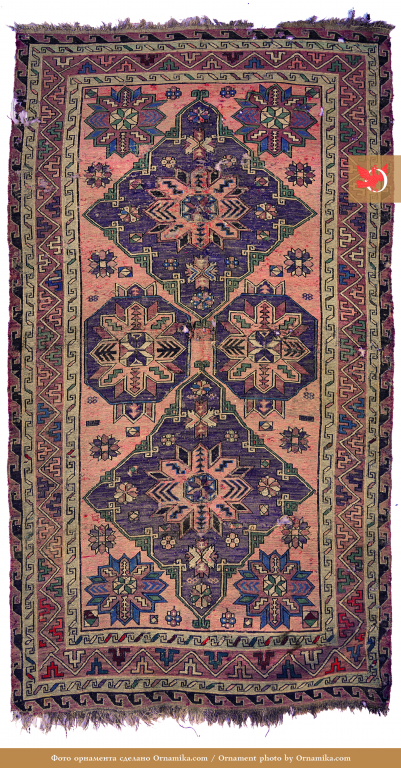
- Zoomorphic motifs reflect the diversity of Dagestani fauna.
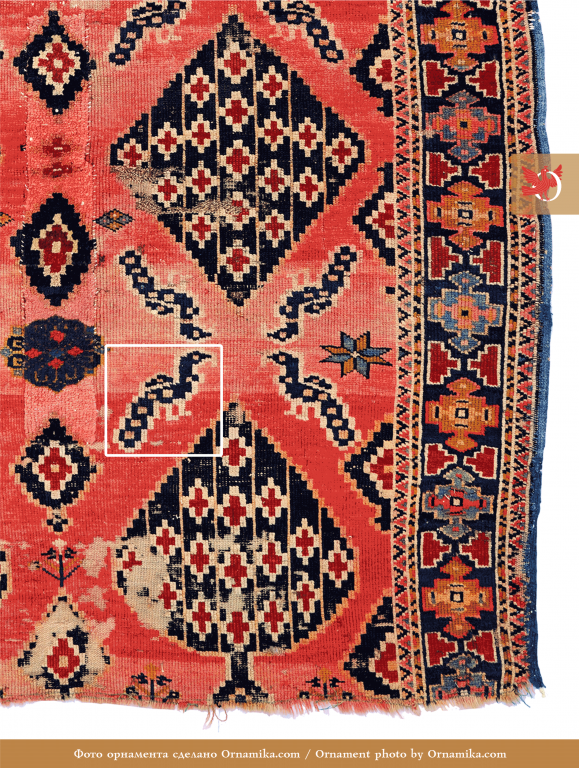
This carpet is decorated with bird-like figures and the image of the tree of life.
Various images of ram horns (known as “karchar”) comprise the significant part of zoomorphic patterns.
Researchers link the stylized images of ram horns with totemic figures.
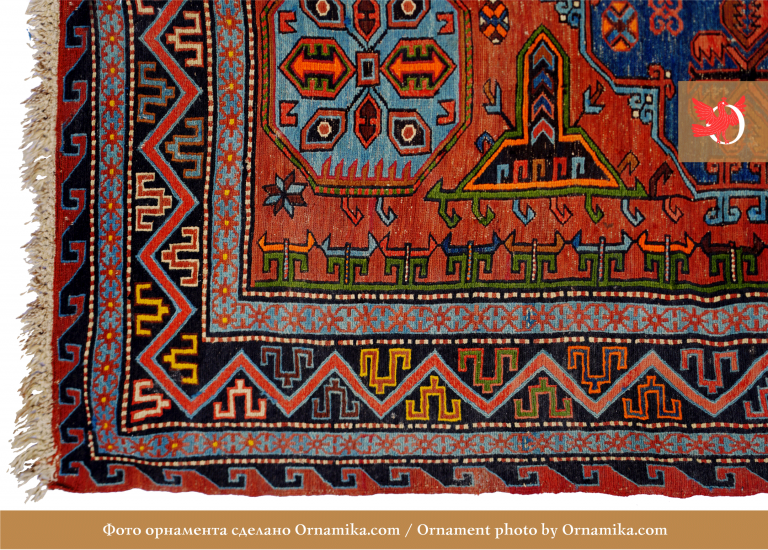
The elements resembling horns stand out against the chain of meandering lines on the dark background.
Some ornamental compositions resemble complex pictures created by the imagination of observant mountain women. They include images of trees with fruits and flowers, figures of animals, or symbols of housewares.
- Anthropomorphic motifs are represented by schematic human figures – for example, equestrians or dancing jigits.
A special type of Dagestani carpets’ ornamentation is comprised of patterns used in the decoration of rugs designed for religious practices. As Islam was spreading across Dagestan, a small prayer mat called “namazlyk” (for namāz) became an integral part of the everyday life of locals.
People believed that the edges of a rug mark the “clean” area, so the one who stands on it is isolated from the filth of the “outer” world. One of the popular ornaments used in the decoration of namazlyks is the image of a mihrab (a special niche in the wall of a mosque) that symbolises the appeal to God.
An important ornamental motif of prayer mats is the image of a sacred tree – the tree of life. The tree of life unites three world spheres: its roots go deep into the ground, to the underworld; its trunk and lower branches touch the sky, and the upper branches spread into paradise. This way the tree connects the terrestrial world and paradise.
The Peculiar Compositions of Carpets from Southern Dagestan
Ornamental compositions of carpets consist of:
- The central ornament. It is characterized by large, complex geometric forms filled with smaller, detailed elements – medallions. Usually this ornament has one or two axes of symmetry, but asymmetric compositions also take place from time to time. The central area of a carpet may contain several medallions, surrounded by smaller rosettes or medallions placed chequerwise.
- The background ornament. It is used to fill the blank space in the central area. It is a minor element of a composition; usually background ornaments are asymmetric and consist of several combined motifs.
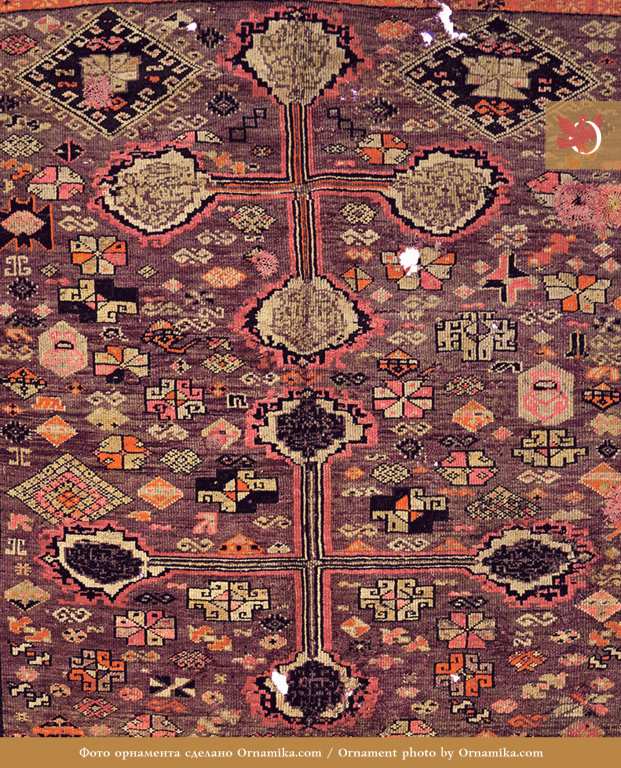
of small rosettes, stars, and S-shaped elements.
Pile rug. Early 20th century. South Dagestan.
- The ornamentation of carpet’s edges. The bordering ornaments enclose the central area, surrounding it with strips of patterns. There can be from 3 to 9 (or 10, according to some sources) such strips. There is usually a main band that is wider than other ones.
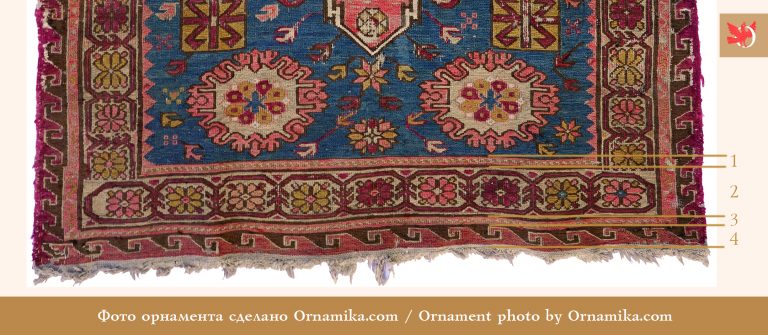
Prayer rug. Fragment. Early 20th century. South Dagestan.
The composition of bordering ornaments is based on the principle of repeatability and rhythmicity.
The ornamentation of edges has different motifs. Geometric, horn-shaped and wave-like patterns are the most widespread ones.
There is Much Work Ahead
In this article, we have observed and illustrated many different patterns. However, it is only a part of the great variety of ornaments. Below you will find the list of elements of Southern Dagestani carpets, as classified by the researchers.

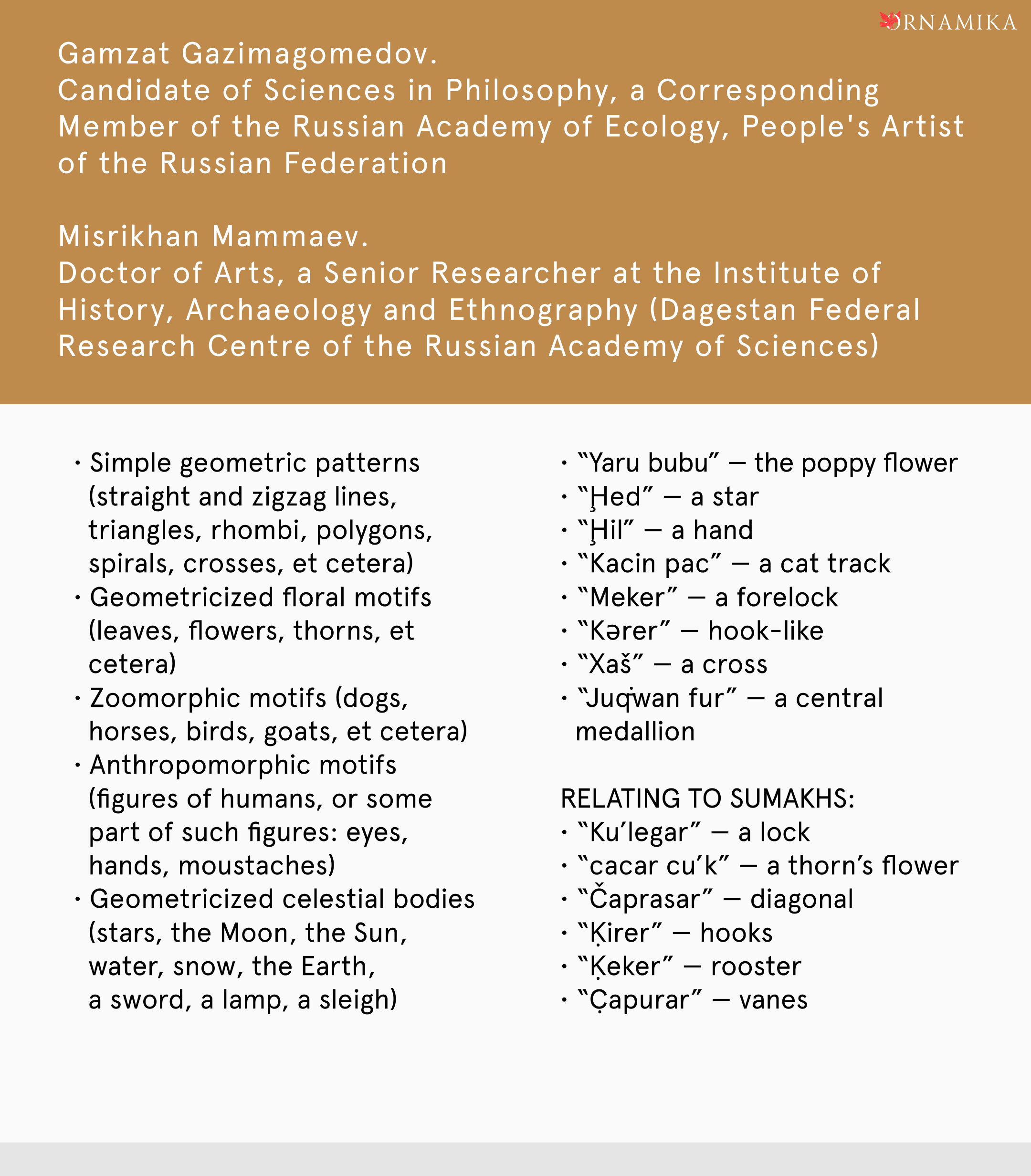

We plan to keep examining the samples of rugs from Southern Dagestan created until the 1920s and to add more visual materials (graphic elements) to this article. We are always happy to cooperate with cultural organisations and experts.
Thank you!
We would like to thank Gulajmat Yusufova, a Research Fellow at the Collections Department of the Derbent Museum and Nature Reserve, for helping us to prepare this article..
Works cited:
- Articles “Rugs and Carpets of Dagestan” and “Ornamental Peculiarities of Dagestani Carpets” (both in Russian) written by the researcher of the Museum of Carpets (the Derbent Museum and Nature Reserve).
- Garunova S. M. “Derbent Rug Making” in the Context of Ethnocultural History (in Russian) // The Bulletin of the Dagestan Research Centre. 2016. № 60. pp. 38–44.
- Garunova S. M. Artistic and Technical Characteristics of Dagestani Lint-Free Carpets (in Russian) // The Bulletin of the Institute of History, Archaeology and Ethnography. 2017. № 2. pp. 133-142.
- Debirov P. M. The History of Dagestani Ornaments. The Origins and the Development of Major Motifs (in Russian). Moscow: Nauka, 2001.
- The Handicrafts of Dagestan (in Russian). Vol. 3 (extended). The group of authors. Makhachkala: Lotos Publishing House, 2012.
- Chirkov D. A. The Decorative Arts of Dagestan. Moscow: Sovetskiy Khudozhnik, 1971.
The author of the article: Elizaveta Berezina


